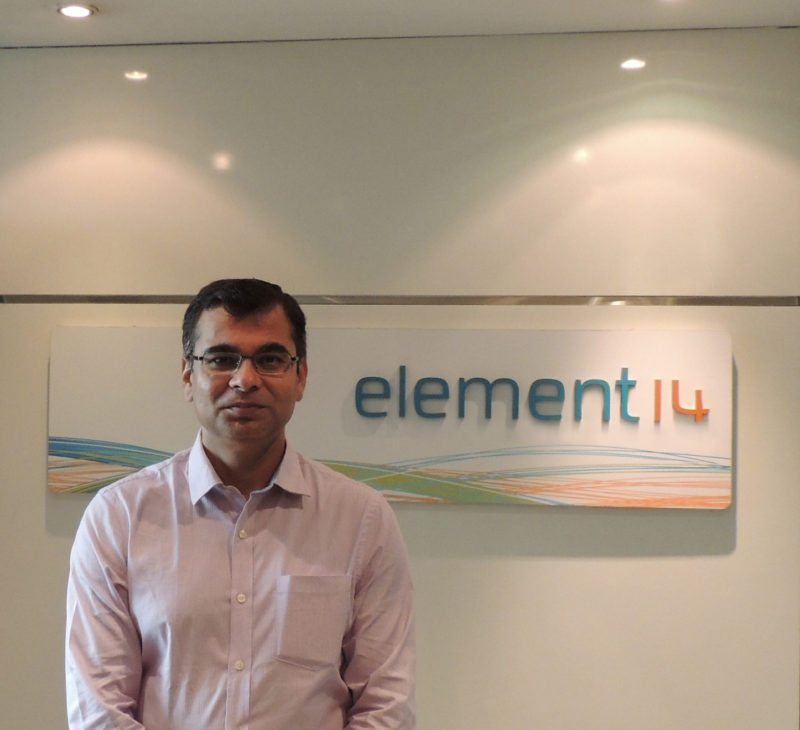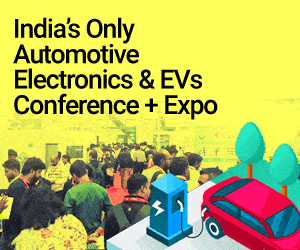E-commerce in India has undoubtedly been a Greenhorn sector in the last decade. We have seen a few unicorns like Flipkart, Snapdeal in this sector along with some global players like Amazon which continue to dominate the Business To Business (B2B) space. In the recent two years we have seen a spate of growth and investment in the Business to Business (B2B) vertical which is playing a pivotal role in influencing major purchasing decisions in small and medium enterprises (SME).
Hence, to clearly understand the emergence of B2B e-commerce in India with latest trends being the focal point, Rahul R of ElectronicsForYou spoke to Ravi Pagar, Regional Director – ASEAN, India Korea and Japan at element14. For the uninitiated, element14 is into high service distributor for electronics and components and is among a part of the Avnet Group of Companies.
Q. Considering all the component preference and consumption data that you have at your fingertips generated by observing customer behaviour and analytics at your website, how has the trends in engineers’ purchase been?
A. element14 is celebrating the 10th year in the B2B e-commerce vertical in India. From the trends that I have observed over the years, the typical techies are well aware of their needs and are generally research oriented.

Almost most of the research today is done online. We help them bridge the gap wherein we enable them to do the research on the community, and purchase on the transactional website.
Today most companies small or big have evolved purchase teams and they even move a step ahead and integrate their systems to modes such as e-procurement to eliminate the need of human intervention at various levels and improve efficiencies. In fact, our Enterprise Resource Planning software (ERP) also connects with the clients ERPs so that they can see our stock catalogue real-time and complete the purchasing process without having to logout of their EFP system thus enabling clients to place orders accordingly.
Today we use high end data analytics to understand customer behaviour, by actually observing what customer does at various stages of their journey with us. For example, if the customer is doing a search, then what parameters is he looking at, does he download the data sheet, what accessories he checks out, how urgent is his requirement. This analytics helps us improve customer experience, by working on it to build better web and ecommerce functionalities.
In summary, engineers now tend to finely evaluate all the aspects about the suppliers including the local support at the ground level, and the reputation of the organisation. Gone are the days when price was a big differentiator. Today customers vouch for a supplier who can add value, whether in terms of technical support or provide them finished development kits to speedup up their design .
Q. When we talk about specific aspects such as the military grade connectors; how often do you think that people sourcing these, military-grade connectors, go online rather than procure these through conventional physical tender-based mechanism?
A. I would like to split the responses into two parts here. One is the establishments (defence) such as LRDE, DRDO, and others. Remember that organisations like these procure products such as mil-grade connectors physically; they generally dont to go online to procure the components due to tendering process.
They resort to ‘cash purchases’ which deals with procurement of engineering products without inviting a tender for very small value. The department heads and engineers is authorised to set thresholds below which cash purchases become mandatory. In the cash purchase scenario, the process of procurement could go online as no tender process is involved.
The second aspect is the private-sector defence establishments; these firms mostly go online to source their defence-engineering hardware components. Online purchases are quite high amongst these firms.
Finally, with the make in India Program, and opening up of defence procurement to private players, we see a lot of demand from authorised third-party players who buy connectors from companies like element14 to supply these to the defence establishments.
Q. What are the most popular developer boards and kits according to your sales data in 2016?
A. Interesting question. To answer this, we need to understand the concept of time to market; this has constantly been reducing over the years due to immense competition. This has resulted in the emergence of many popular single-board computers like the Raspberry Pi.
In today’s world, even elementary-level school kids are exposed to coding. The Raspberry Pi captures eyeballs in this scenario. Raspberry Pi has also now found its way to the Internet-Of-Things (IoT) world by being used by engineers and hobbyists besides student’s fraternity.
Therefore, the Raspberry Pi qualifies as the most popular developer board as it also ensures that time to market is very little. More specifically, the Raspberry Pi 3 was one of the hot favourites among the developer community in India. Many other single board computers such as TI BeagleBone, NXP Warp Board etc have also found increased preference in 2016.
Q. Do you see any connection with user demographics and their preference of Microcontroller Units when speaking about online procurement amongst engineers?
A. Talking about the Indian demographics, let us divide the India geography into three different zones; north, south, and the east. Let us also not forget that the startup revolution is happening (refers to an increased boom) in the southern part of India, in my opinion.
South India has the highest requirements for MCUs, IoT-related components, sensors, and more. However, in northern India, established businesses are ruling the roost compared to start-ups; hence the requirements are slightly different comparatively. However, these geographical-related purchase preferences could easily change over the next three years based on the development of Indian geographies specially due to IOT related startups and applications.
Q. How do you handle delivery for areas where standard courier services aren’t strong?
A. As of now, we deliver engineering products/hardware to more than 700 cities in India. Now, remember that these cities are not necessarily the tier-1 regions always.
We take products from three locations in the world viz. the United States (US), the United Kingdom (UK), and Singapore; and then get these product custom cleared, and deliver to the customers doorsteps. This whole process has now become a lot fine-tuned over the period of time. We also have an ACP with customs department which makes our customs clearing process faster. However, in certain cases when the products move from Bangalore to other regions (especially tier-2) we face challenges due to local requirements like Way bills, road permits and state specific local forms which can add to procedural delays.
We mainly rely on local courier companies for delivering products in certain remote geographies of India; but again, not all our courier partners are efficient in every region. It has taken time for us to understand the functioning of our supply-chain partners and customise them based on their efficiencies region wise.
We also take customer feedbacks, with respect to supply chain partners based on the services rendered. Finally we also make use of the governmental postal services to ensure maximum reachability.
Q. What are some of the biggest challenges faced in 2016? Please state challenges across sectors.
A. Honestly speaking, we have had a good run, and have been able to offer a seamless service that we offer internationally into India. We can get a few customers who have tasted our offerings in other markets like UK and US to vouch for the same.
The challenges are mainly procedural, and policy related, which can be frustrating and which we continue to work with Government and the Industry body to highlight and navigate.
Q. Finally, what innovations do you see in the online retailing of semiconductors and engineering equipment over the next few years?
A.In India, growth of online retailing of semiconductors and engineering equipment has also been stable and is likely to continue to keep going this way. As far as innovations are concerned, I think that the B2B category is poised for good growth.
Talking about electronics components, the key focus area would be how a B2B company attracts new customers by shifting their existing offline channels into online. Wider portfolio of products offered would also be a key trend over the next couple of years. We would also see products of superior quality. Focus is going to be more on low power consumption products, products which are sleeker, and make the design more efficient, products which can communicate seamlessly with one another.
The buying trends of customers are also poised for change in sync with the existing competition. Customers will continue to expect products faster, buying behaviour supported by being more intuitive, and obviously products being value for money (and not necessarily cheaper).








